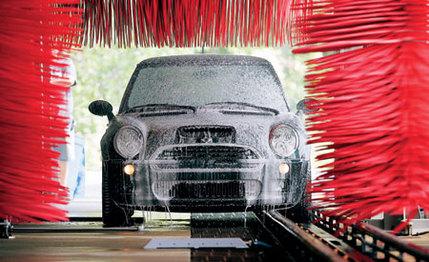 Long-Term Road Test
Long-Term Road Test
Retro cars are popular, but we have yet to find a "new" vehicle that satisfies our yearning for the "old." Can you remember your first vehicle? Didn't you love it because it was yours? If you had to drive that first car today, you'd probably say it was junk. You can't reinvent the toothbrush, any more than you can reinvent a Mini or a Beetle or a T-Bird. New cars certainly have advantages in build quality and technologies, and they generally garner better performance numbers, but the character and charisma of the original are often gone.
So, what's the point? Let's check out 14 months of "life with Mini" and find out.
A British Racing Green Mini Cooper arrived in our parking lot in March 2003. We had chosen the supercharged and intercooled S model, with a base price of $19,975 ($3000 more than the base Cooper). Standard equipment included a six-speed Getrag manual transmission, a flat-tire monitor (the Mini comes with 16-inch run-flats and no spare), traction control, electronic brake-force distribution, and ABS.
We added the Cold Weather package (heated washer jets, mirrors, and front seats for $300), a leather interior ($1250), the Premium package (multifunction steering wheel, sunroof, automatic climate control, and onboard computer for $1250), fog lights ($140), xenon headlights ($500), and metallic paint ($400), topping us out at $23,815.
The Cooper had a computerized service program that told us when to take our Mini in for maintenance. That was a very good thing, because there's only one authorized Mini dealer in Michigan: Motor City Mini, 57 miles away in Shelby Township north of Detroit.
Even with our propensity for severe driving, the Cooper prompted us only twice for service. In July 2003, we had the oil and filter changed at 12,951 miles. We weren't charged. Factory-recommended maintenance is covered for three years or 36,000 miles. The dealer dunned us $25 for a tire rotation (not a bad idea, in fact), which was not recommended, so it's not figured in our service cost.
Eight months later, the "go directly to service" indicator showed up again at 30,717 miles. The Mini got another oil and filter change (an astonishing 18K since the first one) and numerous inspections, and again, there was no charge. A few items were dealt with under warranty: A cracked trim piece on the driver's-side A-pillar was replaced. An extremely annoying rattle in the dash was quelled. The noise was traced to a faulty locating pin that had to be reglued and insulated. The front washer jets were reaimed, as they were squirting Kansas and Canada, but never the windshield. The wipers were replaced; they had been streaking, not wiping.
Our Cooper S's performance improved with age in all categories but braking: When new, the S stopped from 70 to 0 mph in 175 feet, and that lengthened eight feet to 183 at 40,000 miles. But the 0-to-60 time was 0.5 second better at 40K, finishing at 6.9, which was 0.1 second better than a Cooper S we tested in July 2002. Zero to 100 went from 20.2 new to 18.6, and roadholding improved from 0.83 g to 0.84. Among $20,000 cars, the Cooper S is quite quick.
The Mini arrived with Dunlop SP Sport 5000 DSST run-flats. Staffers liked the Mini's responsive handling but not so much its ride. The combination of a firm suspension and short 97.1-inch wheelbase did little to smooth out local roads.